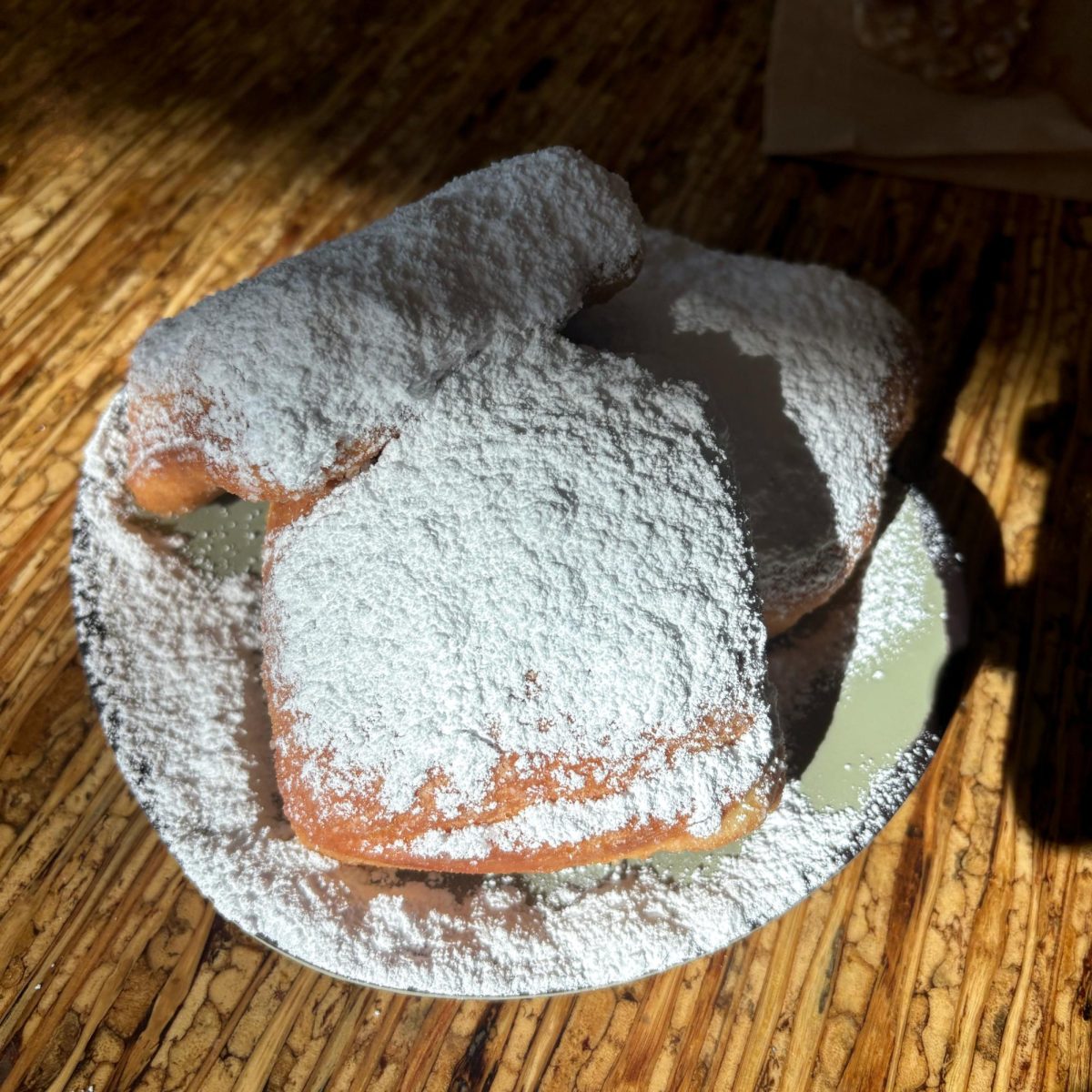In senior Leo Lezhnin’s residence hall room, a turntable sits atop his dresser. Beside the dresser, about 50 classic records from artists like Bob Marley and Pink Floyd are stacked against walls coated in artist memorabilia and posters.
Vinyl record sales have steadily increased over the past 12 years, with more than 14 million units sold in 2017. More than 10 students said in interviews that they’ve opted to listen to records even as music streaming gains popularity.
Lezhnin, who is majoring in information systems and technology management, said his records put his music preferences on full display when guests come to his room. He said there is “romance” in watching his records spin on the turntable.
“When people have digital, you can barely share what you listen to,” Lezhnin said. “Here people come and look through and they see what my tastes are.”
Gayle Wald, a professor of English and American studies and chair of the American studies department, said though she listens to music online regularly, she recognizes record collectors’ attraction to vinyl. While consumers of media may enjoy mediums that are more technological, like reading on Kindle tablets, some listeners will crave the “materiality of the record player and the record,” she said.
Wald said in her own college days in the early 1980s, it was a “ritual” experience to bring your stereo, cassette deck and speakers to campus. But now some students are taking advantage of an anachronistic way of listening.
Since their fade-out in the 1990s, vinyl records have since made a comeback in the music market, sitting on racks in Urban Outfitters next to trendy clothing and Fujifilm cameras. About 72 percent of vinyl consumers are under the age of 35.
Alainna Belknap, a senior majoring in international affairs, said her interest in vinyl grew when her grandfather gifted her family more than 100 records. She said she “never would have heard or cared about” several oldies artists without her grandpa’s hand-me-downs.
“I’ve got a small collection here, some of the stuff I mentioned, but the stuff back home, I haven’t even scratched the surface,” Belknap said. “It pretty much got me into classic rock in general.”
[gwh_image id=”1067223″ credit=”Julia Abriola | Senior Staff Photographer” align=”none” size=”embedded-img”]Red Onion Records, located at 1628 U St. NW, sells new, used and rare records. [/gwh_image]
Delon Etzel, a junior majoring in mechanical engineering, said his relatives who sold their records for pennies during their decline in popularity are “kicking themselves” now as he buys the same discs for $25 a pop. He said he set himself back about $500 for the audio setup, between his turntable, a speaker set and an amplifier he scavenged from eBay.
While vinyl is “not the most convenient” or the cheapest way to listen to music, he said the active experience is different from listening to music between classes.
“When you actually have to sit down and take a record out of the sleeve and put it into a player, drop the needle, set your levels on the amplifier – you’re very focused on actually listening to the music,” he said. “I find that whole process of focusing on music specifically to be relaxing and enjoyable.”
He said purchasing records can better support artists because they make meager royalties from streaming compared to album sales.
Freshman Georgina Mierow said she owns several limited edition colored-disc records and a picture disc of Leonardo DiCaprio from the “Titanic” soundtrack. She said vinyl’s spike in popularity could be due to a shift in cultural value, along with its throwback appeal.
“I feel like our culture nowadays is more focused and oriented on being aesthetically pleasing,” Mierow said. “A lot of the vintage things that were in style back when they were first created are coming back because people like the idea of them, like Polaroid cameras.”
Matt McFaul, a senior majoring in marketing, said he has owned a record player since middle school. Album covers of Fleetwood Mac and Donna Summer adorn his apartment wall, adjacent to rows of Polaroid portraits.
McFaul said he has about 150 records, and shops about once a week at Smash Records in Adams Morgan or Red Onion Records on U Street, spending his extra paycheck money on a relic of an album. He said the tangibility of records adds to their charm.
“I love being able to hold something in my hand,” McFaul said. “Also, it just sounds warmer. I don’t really know how to describe it.”
Evan Cowan, who works at Smash Records, said the store at 2314 18th St. NW has been in operation since the 1980s, selling music for as low as 99 cents. Its wares include records, clothing, turntables and cassettes. Smash Records picks up new and used records each week that range in price from $14 to $35.
“I definitely have seen an uptick of people getting their collection going and also reestablishing a collection, especially this time of year,” Cowan said. “More students who decided that when they come to school for the first time that they’re gonna have a set up for the first time.”
Caroline Frantz contributed reporting.




